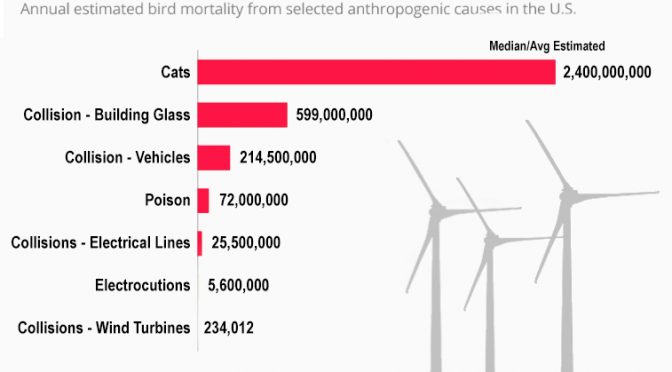Wind turbines. It’s no secret that we’re big fans. Yet, with so many common myths out there, we’re here to clear the air… Dig into the details Wind turbines are good for wildlife
When we were researching for this video, we found that the myth that wind turbines are killing lots of birds was still given airtime.
But take a look at the recent IPCC report and what the climate scientists have to say, and you very soon realise that we simply don’t have another option than to embrace renewable technologies, as the alternative is far worse for humans and wildlife alike.
If we continue at the current rates of emissions, it’s highly likely we will reach 1.5°C of warming within the next two decades, and with every increment of warming comes more frequent storms, floods, droughts, heatwaves and fires. More humans being displaced and more wildlife losing their habitats.
Put simply, wind turbines are far less of a threat to wildlife than most other human activities, including driving, flying, building tall buildings, burning fossil fuels and keeping pet cats.
The data
Research from Mackay (2008) via the London School of Economics states that 55 million birds are killed every year by domestic cats. Sounds too high? Bear in mind that there are roughly 12 million cats in the UK.
We estimated that around 20,000 birds were killed by wind turbines in the UK in 2019. This was based on two pieces of research.
Sovacool (2009) states that there are approximately 0.3 bird deaths per 1GWh of wind power generated. When we looked into how much wind power was generated in the UK in 2019, the figure was 64 TWh, or 64000 GWh. When multiplied by 0.3, we reach the number of 19,200 bird deaths a year, which we rounded up to 20,000. That same piece of research from Sovacool showed that 17 times more birds are killed annually by fossil fuels, from activities related to extracting and transporting fuels to the power stations themselves. Burning fossil fuels also causes global heating, which poses a much greater threat to all wildlife. Wind turbines are carbon efficient
Another mind-boggling myth was that wind turbines will never pay back the energy it takes to manufacture and transport them to site. And that’s just simply not true. Both onshore and offshore turbines – if built in suitable locations of course – will pay back all that carbon after less than two years. So that gives them around 23 years left of their designed lifespan when they are entirely carbon negative!
The data
This myth was busted using research from CarbonXChange (2015), which looked at the carbon intensity of wind turbine construction, transportation, operation, maintenance and decommissioning. The research found that the carbon payback of onshore wind ranged from 6 months to 2 years; whereas for offshore this was 5 months to 1 year. Wind turbines are reliable!
While they may not turn 24/7, they aren’t designed to, either. Wind turbines, solar panels and hydro turbines work so well in Great Britain because of the variability of our weather. It’s often windy and rainy here, and we have enough sunny weather and a reasonably mild climate to help solar panels work well. And that’s how renewables managed to provide a huge 43% of the nation’s power in 2020, and growing as we carve out our path to net zero by 2050.
The data
According to government statistics, in 2020, renewable power provided 43.1% of total generation on the UK electricity grid. 24% of the UK’s total electricity generation in 2020 was from wind power.
We also stated that it is entirely possible for our nation to be reliably powered by renewables by 2050. This is based on our own Renewable Nation report, written in collaboration with Energy Systems Catapult. …and lots of people love them
The people who aren’t happy will always shout the loudest, so you could very easily believe that most people don’t like wind turbines or oppose them being built in their local area.
Actually, the places where there are the most wind turbines, like Cornwall for example, also have the most wind turbine advocates. People enjoy living near wind turbines and seeing them on the horizon.
The data
We used the latest government public attitude tracking data from March 2021 to bust this myth. The data showed that 76% of the public either strongly supported or supported offshore wind, and 70% felt the same about onshore wind.
So there we have it – some of the biggest wind power myths, busted. Wind makes up over 53% of our 100% renewable fuel mix. So we hope that like us, you live wind power too.
Good Energy Group plc published this content on 09 December 2021 and is solely responsible for the information contained therein.


